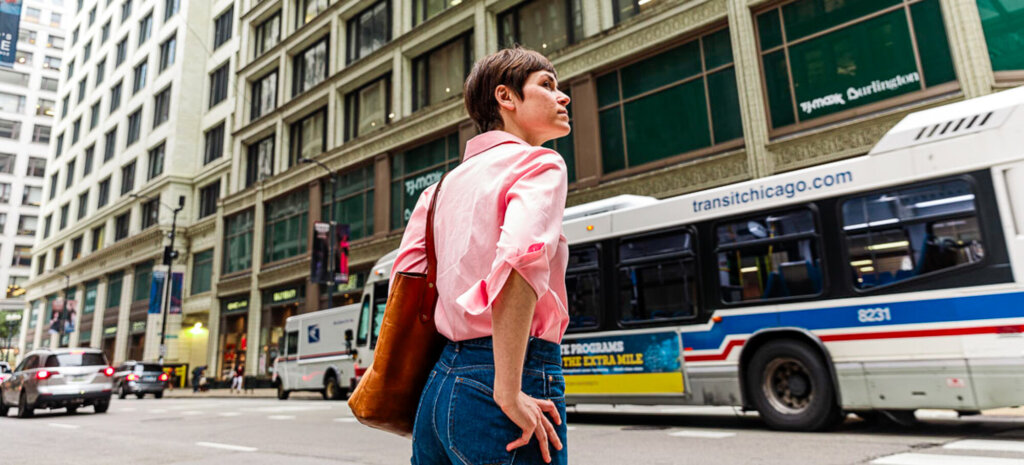Plan of Action for Regional Transportation

Chicago would not be Chicago without transit. The city was built on and around our iconic elevated railway. Suburban riders rely on Metra to connect them with work and play in and around the Loop. A robust network of buses crisscrosses the region taking residents to and from their jobs, doctors’ appointments and visits with loved ones. A metro area of our size and density simply could not exist without public transportation. And yet the future of this vital infrastructure hangs in the balance.
The system is aging. The Chicago Transit Authority (CTA) recently celebrated its 125th birthday. The rail lines that Metra runs on have been in operation for more than a century. Our bus fleets need electrification and are too often snarled in car traffic. Staffing is an issue and public perception of the rider experience remains stubbornly low. The system needs reinvestment and reimagining in order to survive.
An essential system at a critical juncture
The urgency could hardly be greater. A funding cliff is looming. When ridership and revenue plummeted during the COVID-19 pandemic, the federal government stepped in to keep the system going. But that funding will sunset by 2025, leaving an operating budget hole of about twenty percent. In a post-COVID world, we need transit more than ever: to battle climate change, to address economic inequities, to improve public health, to reduce housing costs, and to improve the safety of travel. Where do we go from here? Cutting service will not solve the funding problem – we would have to shut down about forty percent of trains and buses, basically collapse the system, at a time when ridership is beginning to rebound.
The Plan of Action
Enter PART, the Plan of Action for Regional Transit. In 2022, the Illinois General Assembly approved Public Act 102-1028, tasking the Chicago Metropolitan Agency for Planning (CMAP) with developing legislative and policy recommendations for the future of the region’s transit system. In collaboration with CMAP, the Active Transportation Alliance, the Center for Neighborhood Technology, the Civic Committee of the Commercial Club of Chicago and other stakeholders, MPC has been actively engaged in development of this comprehensive plan. MPC’s President and CEO Darlene Hightower served on the steering committee which addressed:
- Financial viability and funding
- Rider experience
- Governance
- Community and Economic Development
Read a draft of the report here.
Governance reform is a must
The system faces challenges, many of which have been developing for years, that current governance structure cannot address. When each transit agency manages to its own bottom line, planning occurs in silos. There is no single entity to connect the dots. Who’s looking for riders that need to transfer between services. What about an integrated farecard so they pay only one fare for each ride? How can we innovate to adapt to post-pandemic commuter patterns and other realities? The Regional Transportation Authority does not have enough power to solve these problems. We need to change the transit governance structure so that planning and project prioritization happen at a regional level, with an integrated and rider-centric perspective.

We can have better transit service
Governance changes must come in tandem with funding transit appropriately. To get the system we want, we need to fund it beyond filling the gap to keep the system we have. We can achieve a vision of safe, welcoming transit that gets people where they need to go throughout the region, not only to downtown Chicago. This includes regional rail offering frequent Metra travel in both directions; better buses, in the suburbs and city, including bus rapid transit (BRT) and a network of Pace Pulse+; improved demand responsive services; and transit-supportive land use and development.
Investing in transit will support new travel patterns required in a post-COVID world and enable the growth and vibrancy of our region going forward. We can modernize our transit system for a sustainable future where we are prepared to adapt and innovate. Other cities have recognized the long-term value of transit and are working hard to build out the kind of network we take for granted.
To have the future we want, — more money freed up in our household budgets; less stressful and dangerous travel; healthy air; better access to jobs, healthcare, and education; and slowing down the climate crisis – we must have the courage to reinvent and reinvest in transit. We need to turn the page on chronic underfunding of our most sustainable and equitable form of transportation. Now is the time.

